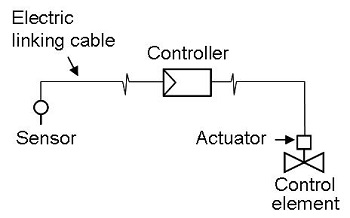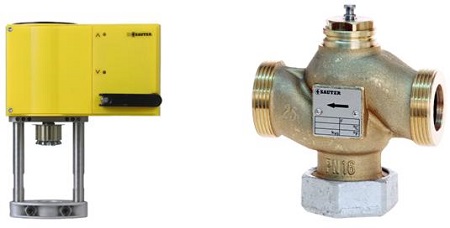A basic regulating system ensures 4 functions:
- Measurement: a sensor or detection probe which measures a physical output value (ex.: a temperature sensor).
- Comparison: a controller which interprets the measurement and compares it to the set. If the measurement is different to the set point, the regulator sends a signal to rectify. The controller is the brain of the system.
- Transmission: an actuator controlled by the regulator adjusts the control element (ex.: a valve servomotor).
- Action: a control element which modifies the power of the system (ex.: the gate of a two way valve which regulates inlet water flow of an emitter).
We represent these different elements as follows:

Let’s look at some elements:

Water temperature Air temperature Controller

Valve control servo motor Regulating valve
